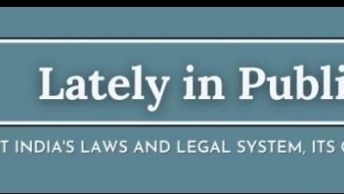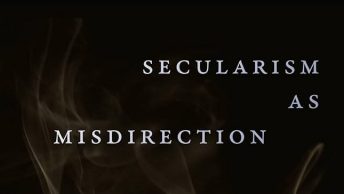It is murder, if the intentional infliction of bodily injury is sufficient in the ordinary course of nature to cause death. In February 2011, a day before her engagement ceremony, 23-year-old Soumya was injured, raped and robbed. She died a few days later, in a hospital, having never regained her consciousness. Death was occasioned by a ‘combination’ of two injuries, the first injury and the second injury, and complications that arose from subsequent sexual assault. Neither of the two injuries nor the sexual assault was sufficient alone, in the ordinary course of nature, to cause death. The second injury could not be ascribed to the accused. For want of that ascription, unfulfilled ‘combination’, the breakage in the chain of causation, the SC ruled out murder in Govindaswamy v. The State of Kerala [Criminal Appeal Nos. 1584-1585 of 2014] (“Govindaswamy”), pronounced on 15.09.2016. A death penalty handed by the Trial Court and confirmed by the High Court was set aside. Aggrieved, the State of Kerala has publicly pledged to challenge the decision. Soumya’s mother has already filed a Review Petition before the SC.
Since the matter turned on the second injury, it is of special interest. Soumya’s head was repeatedly banged against the walls of a train compartment (i.e., the first injury). Later, she either jumped off the train or was pushed out by the accused. The train had negligible speed. At any rate, her fall caused the second injury. The SC considered, unless the fall from the train could be ascribed to the accused on the basis of cogent and reliable evidence, meaning thereby that “the accused had pushed the deceased out of the train and the possibility of the deceased herself jumping out of the train was ruled out”, the liability of the accused for the said injury could not necessarily follow.
The State attempted to argue that in view of the first injury and the ‘impaired mental reflexes’ of Soumya, she could not have taken the decision to jump. While the SC accepted that the said proposition was not ‘necessarily incorrect’, it attached greater weight to the evidence of two ‘chance witnesses’. Prosecution Witness No. 4 and Prosecution Witness No. 40, travelling on the same train, had heard and believed a ‘middle-aged man’, that Soumya had jumped on her own.
Hearsay evidence does not derive its value solely from the credit given to the witness himself, but rests also, in part, on the veracity and competence of some other person. Hearsay evidence is excluded on the ground that it is always desirable, in the interest of justice, to get the person, whose statement is relied upon, into Court for his examination in the regular way, in order that many possible sources of inaccuracy and untrustworthiness can be brought to light and exposed, if they exist, by the test of cross-examination [See Kalyan Kumar Gogoi v. Ashutosh Agnihotri, (2011) 2 SCC 532]. It is absurd that that ‘middle-aged man’ was never brought to trial, even as the reliance on his word by P.W. 4 and P.W. 40 has trumped medical opinion before the Highest Court of the Land.
The allergy to hearsay evidence is not always justified. It may be accepted under certain circumstances [See State of Haryana v. Rattan Singh, AIR 1977 SC 1512]. All the more reason it was important to take note of Prosecution Witness No. 47, who conducted the potency test of the accused. The accused had fairly confessed to P.W. 47 to have pushed out Soumya off the train. Extra-judicial confessions made to a doctor can be accepted provided there is no evidence at all to suggest that any policeman was present when the accused made the confessional statement before the doctor [See M.A. Antony v. State of Kerala, (2009) 6 SCC 220]. Two Courts below relied on the extra-judicial confession made by the accused to P.W. 47 and considered the same admissible, voluntary and made without any coercion, undue influence, or threat. Discarding the evidence of P.W. 47 at the altar of the hearsay evidence of P.W. 4 and P.W. 40 is another absurdity of the judgment in Govindaswami. The SC failed to interpret crucial oral and documentary evidence on record.
Even if Soumya had jumped out of the train, there was no breakage in the chain of causation of bodily injuries on her, by the accused. Injuries, that were sufficient to lead her to death in the ordinary course of nature. That is murder. Soumya did not break the causal chain when jumping off the moving train to protect herself from sexual assault. According to Dr. Mrinal Satish, Associate Professor of Law, and Executive Director, Centre for Constitutional Law, Policy, and Governance, NLU Delhi “there is sufficient case law to back such argument”.
As the State of Kerala and Soumya’s mother prepare for a Review before the SC, they must know old arguments are not enough to reopen concluded adjudications. A Review is not maintainable unless the material error, manifest on the face of the order, undermines its soundness or results in a miscarriage of justice [See Kamlesh Verma v. Mayawati, (2013) 8 SCC 320]. Govindaswamy, the appellant-accused, still carries a ‘life imprisonment’. For those against death penalty laws, ‘life imprisonment’, is sufficient justice. It is my prediction however that the setting aside of Govindaswamy’s conviction for murder will continue to haunt our jurisprudence for sometime. We shall wait for the story to unfold further.





